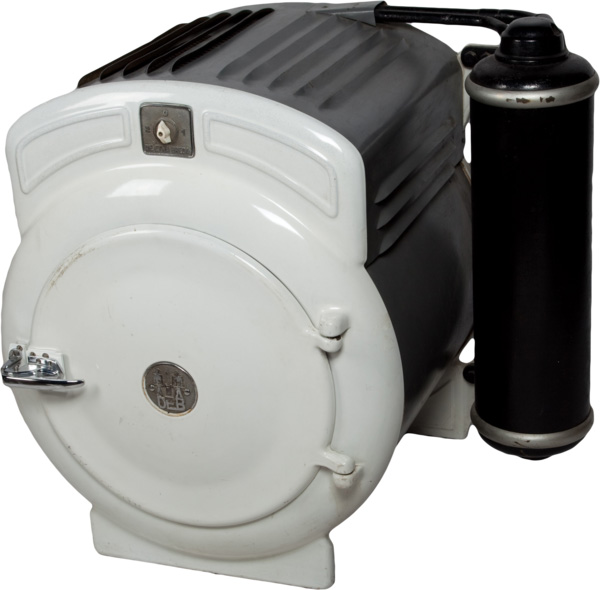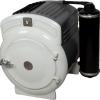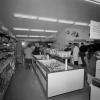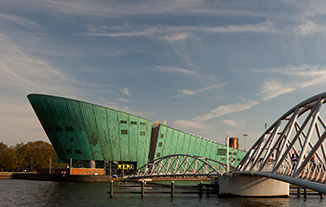Refrigerator, 1935, Etna

Object Description
The DEB (De Etna Breda) refrigerator works on the principle of rapid ammonia evaporation, which cools rapidly. It works as follows: To the right of the refrigerator is a cylinder, called the 'cooker', filled with salt (calcium chloride) that has the property of absorbing ammonia. When this cooker is is heated over two hours, the ammonia is driven out and condenses in the cooling chambers above the cabinet, and then flows its way into the tank within the refrigerator. This tank is filled with a liquid that retains the cooling effect and passes it to the cabinet. From this tank, the evaporating ammonia is drawn to the cooling salt that remains in the cooker. This process repeats itself regularly in 24 hours of the day. (text from a pamphlet about the refrigerator). Origin: the household laboratory KEMA. Arnhem. Year of manufacture, ca. 1935. Volume 45 litres. Weight: 120 kg For comparison: a present-day table model of refrigerator (130 litres, 2011) weighs about 30 kilos.
On this page we provide metadata using the Dublin Core metadata format. The metadata is derived in most cases from metadata found in the source collection; in some cases we have added additional information where it was not available.
















